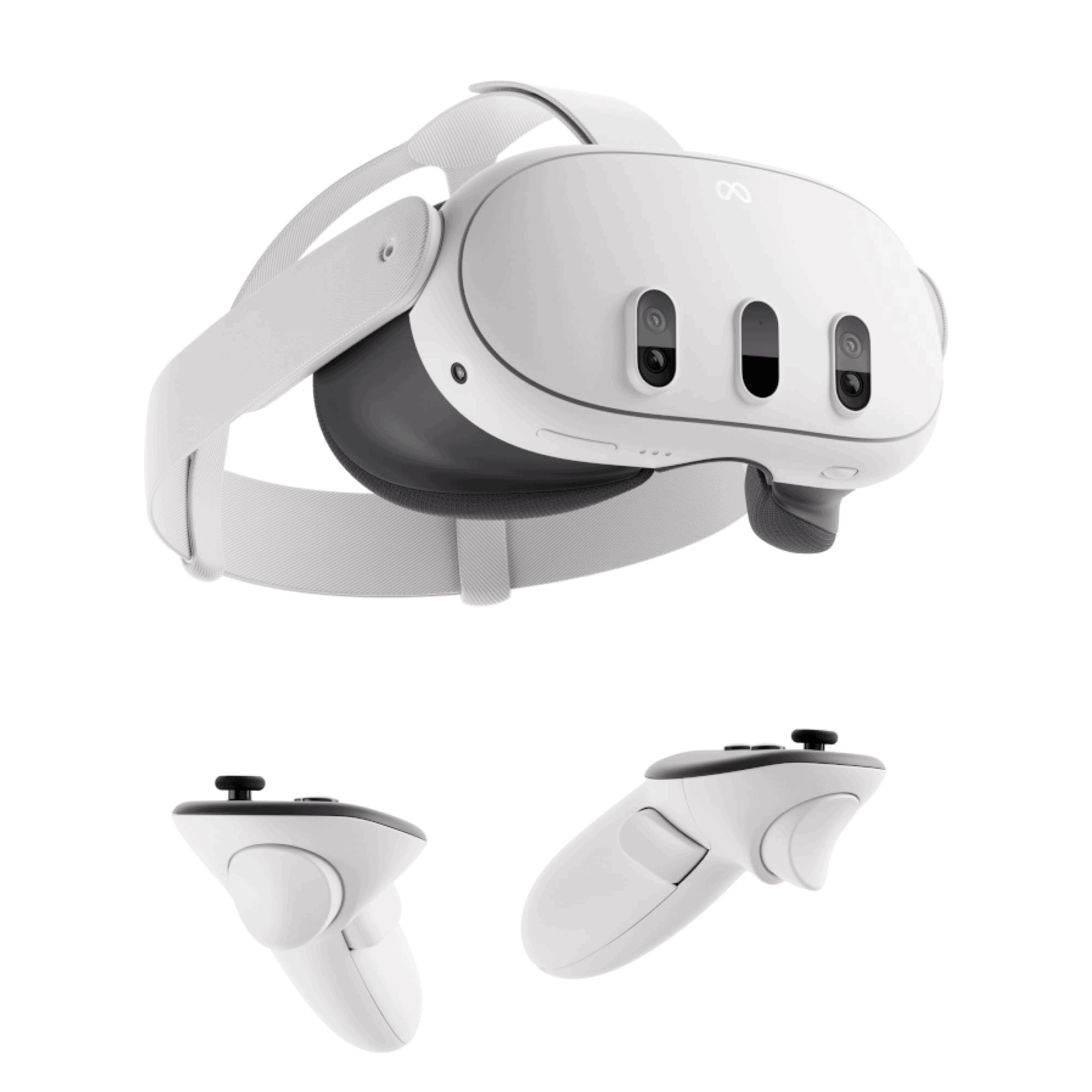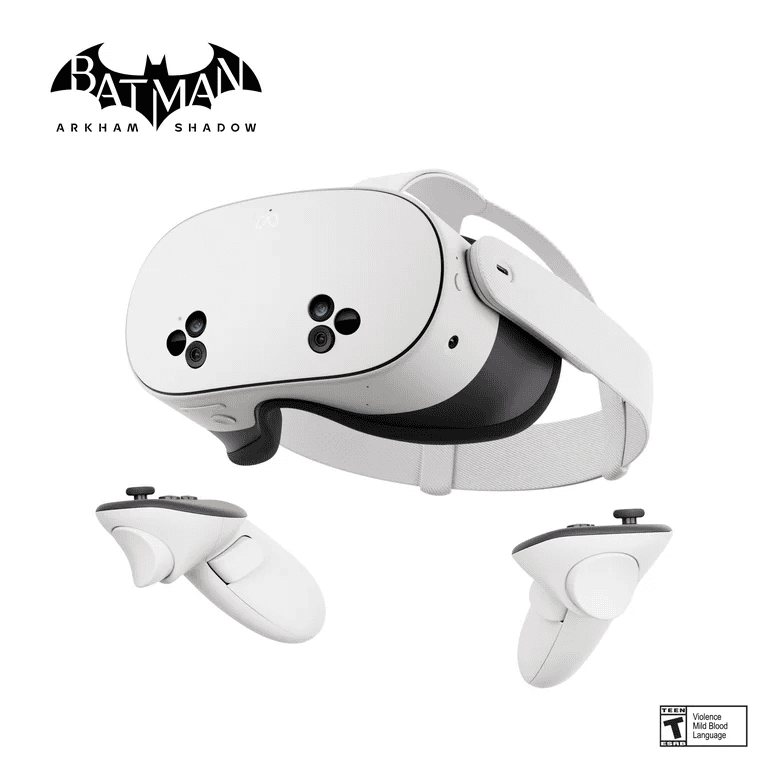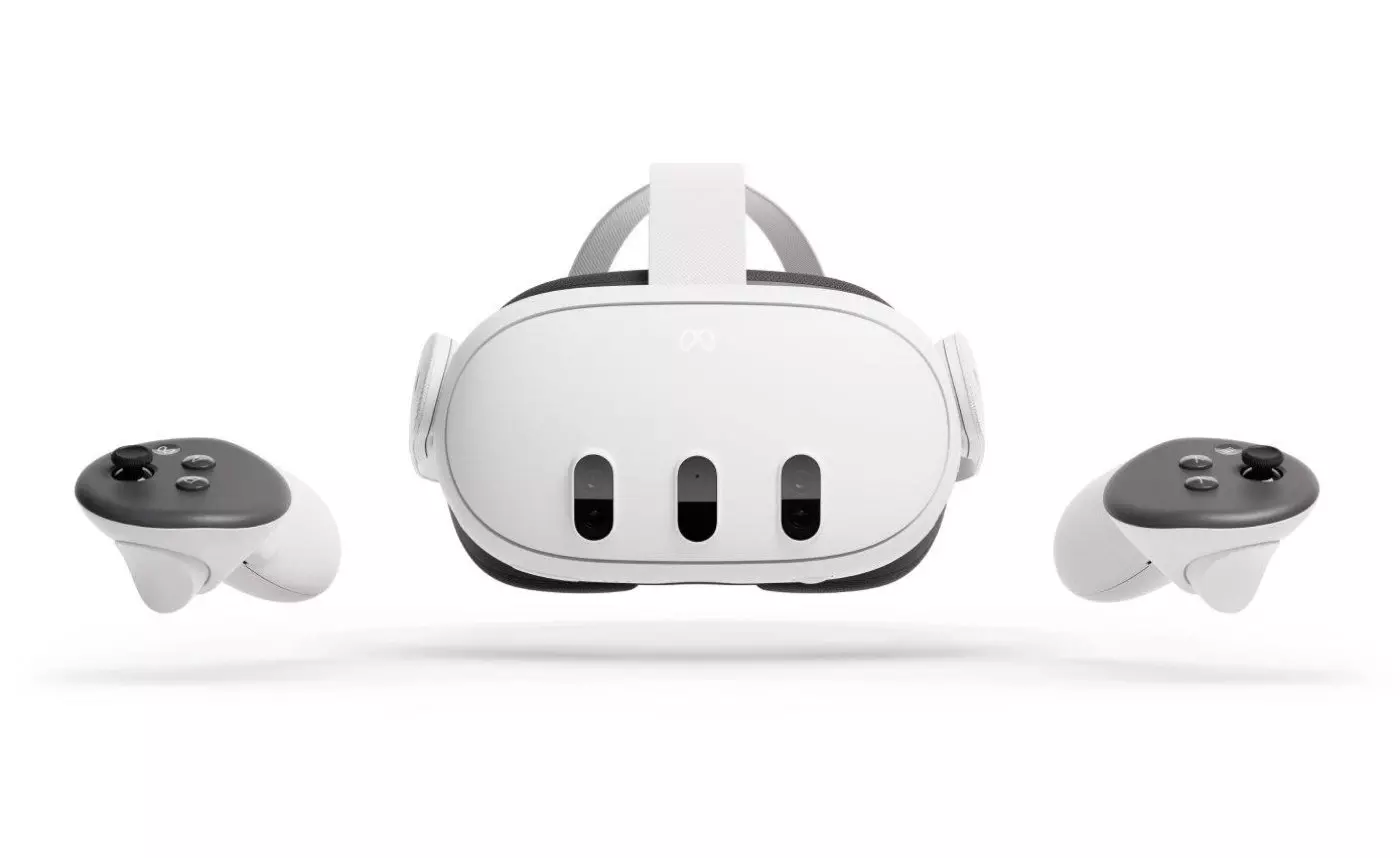The top VR headset options for Gaming this year are dominated by Meta, with the top two options being the Meta Quest 3 and the Meta Quest 3S. Virtual reality (VR) technology has improved a lot in recent years. Many different VR headsets are now available, each with unique features. These devices let users enter immersive digital worlds for gaming, education, or professional use.
When choosing a VR headset, consider key factors like price, performance, and how you plan to use it. Some headsets can work on their own, while others need to connect to a PC or gaming console. The technology is advancing quickly, with new models offering better visuals and motion tracking.
Note: We select all our products independently. If you purchase through our links, we may earn a commission.
Choosing the Right VR Headset for Your Gaming Needs

Understanding Your VR Needs
Picking the right VR headset can be exciting. But it’s good to think about what you want before you buy. Do you want to play games without a PC? Or do you want the best possible graphics from your computer? This makes a big difference in what headset is best. Standalone headsets, like the Meta Quest 3 and 3S, work without a PC. PC VR headsets, like the Valve Index, need a powerful computer to run. Console VR, like the PlayStation VR2, only works with a PlayStation 5.
Top VR Headsets for Gaming
Here are some of the best VR headsets for gaming in late 2024. We will look at both standalone and PC options.
Standalone VR Headsets
These headsets are great if you don’t have a gaming PC. They have everything built in.
- Meta Quest 3: This is a great all-around choice. It has good mixed reality, better performance than older Quests, and a good game library. It costs $499.99 for the 128GB version.
- Meta Quest 3S: This is a more budget-friendly option. It has similar performance to the Quest 3 but costs less at $349.99 for the 128GB version. It has some trade-offs like a lower resolution display.

PC VR Headsets
These headsets give the best graphics but need a powerful PC.
- Valve Index: This is a top-end PC VR headset. It has great tracking, high refresh rates, and special controllers. It is expensive, costing $999 for the full kit.
- HP Reverb G2: This headset has very sharp displays. It is good for games where you need to see small details, like racing games. It is often cheaper than the Index, costing around $449, but it is difficult to buy new as it has been discontinued.
Console VR
- PlayStation VR2: This is a premium VR experience designed for the PlayStation 5 console. It offers high-fidelity visuals, comfortable design, and innovative features such as eye-tracking and headset haptics for an immersive gaming experience. It costs $549.99.
Headset Comparison Table
| Rank | Headset | Standalone/PC | Price (USD) | Key Features |
|---|---|---|---|---|
| 1 | Meta Quest 3 | Standalone/PC | Click To Check | Good mixed reality, better performance, comfortable. |
| 2 | Meta Quest 3S | Standalone/PC | Click To Check | Affordable standalone VR, similar performance to Quest 3. |
| 3 | Valve Index | PC | Click To Check | Top tracking, high refresh rates, unique controllers. |
| 4 | PlayStation VR2 | Console (PS5) | Click To Check | High-fidelity visuals, eye-tracking, haptics |
Choosing the Best Headset for You
The best headset depends on what you want. If you don’t have a PC, the Meta Quest 3 or 3S are good choices. If you want the best PC VR, the Valve Index is great if you have the money. If you own a Playstation 5, the PS VR2 is a good option. The HP Reverb G2 is a good middle ground for PC VR, but you won’t find one new (most likely). You can check sites like eBay to see if you can pick up a used one.
Understanding PC VR System Requirements
If you choose a PC VR headset, make sure your computer is powerful enough. PC VR games need a good graphics card and processor. Valve has minimum and recommended specs for the Index. For example, they advise at least an NVIDIA GeForce GTX 1070 or AMD RX 480 graphics card. HP has similar specs for the Reverb G2. It is important to check these before you buy a PC VR headset.
Key Takeaways
- VR headsets offer immersive experiences for gaming, learning, and work
- Standalone and tethered options cater to different user needs and budgets
- Advancements in VR technology are constantly improving visual quality and tracking
Top Standalone VR Device
Meta Quest 3
The Meta Quest 3 stands out as a leading standalone VR headset. It boasts color cameras that let users see their surroundings clearly. The device offers a crisp, high-resolution display for immersive experiences.
A powerful processor drives the Quest 3’s performance. Its design prioritizes user comfort during extended wear. The headset lacks eye-tracking technology, which some may miss. Battery life is limited, requiring frequent charging.
Top Budget-Friendly Virtual Reality Headset
Meta Quest 3S: Affordable Excellence
The Meta Quest 3S offers great value for VR enthusiasts. It boasts a powerful Qualcomm Snapdragon XR2 Gen 2 processor, enabling smooth performance. The headset features color pass-through cameras, enhancing mixed reality experiences.
Key features:
- Standalone or PC-tethered use
- Extensive app and game library
- Competitive price point
Potential drawbacks:
- Display quality may vary
- Controller tracking limitations
The Meta Quest 3S balances cost and capabilities, making it a solid choice for budget-conscious VR users.
Top-Tier Options for VR Enthusiasts
Meta Quest Pro: High-End Standalone Headset
The Meta Quest Pro offers advanced features for serious VR users. It boasts improved comfort over previous models. Eye and face tracking enhance immersion. Color pass-through cameras allow for mixed reality experiences.
The headset and controllers are rechargeable. No PC is required for operation. However, the device comes with a hefty price tag. The virtual world can feel empty at times. Battery life is limited.
• Pros:
- Standalone operation
- Advanced tracking
- Mixed reality capable
• Cons:
- Expensive
- Short battery life
- Sparse virtual environments
Top AR/VR Interface
Apple’s Revolutionary Headset
The Apple Vision Pro sets a new standard for AR/VR interfaces. Its eye and hand tracking technology eliminates the need for physical controllers. The display offers vibrant colors and sharp images. Video passthrough quality is exceptional.
Key features:
- Advanced eye and hand tracking
- High-quality display
- Excellent video passthrough
- Wide range of visionOS apps
Drawbacks:
- High price point
- Limited battery life
- Front-heavy design
- Some iPad app compatibility issues
The Vision Pro’s innovative interface promises an immersive experience, but potential buyers should weigh its strengths against its limitations.
VR for PlayStation 5 Enthusiasts
PlayStation VR2
The PlayStation VR2 offers high-quality graphics and sound for PS5 gamers. Its eye-tracking technology enhances immersion. The device is light and easy to set up.
Key features:
- Impressive visuals
- Advanced audio
- Eye tracking
- Comfortable design
- Simple setup process
Players can enjoy a strong selection of launch titles. One drawback: it doesn’t work with original PSVR games.
Top VR Controllers
Valve Index Hand Controls
The Valve Index VR Kit offers advanced hand controls with finger tracking technology. These controllers provide precise input for virtual reality experiences. The kit’s high refresh rate of 120Hz ensures smooth visuals and reduced motion sickness.
Users can access a wide range of VR software through SteamVR on PC. However, the tethered design may limit movement. The price point is higher compared to some alternatives.
Pros:
- Accurate finger tracking
- Smooth 120Hz display
- Large SteamVR library
Cons:
- Higher cost
- Wired connection
VR enthusiasts appreciate the Index’s advanced features, despite its premium price.
High-Resolution Virtual Reality
HTC Vive Pro 2
The HTC Vive Pro 2 offers impressive visual quality for virtual reality gaming. Its high-resolution display delivers sharp images and smooth motion tracking. The headset is compatible with Valve Index controllers, expanding its versatility.
Pros:
- Crisp visuals
- Fluid movement tracking
- Works with various controllers
Cons:
- Higher price point
- Base stations and controllers sold separately
The Vive Pro 2’s premium features come at a cost, both in terms of price and additional required purchases. Gamers seeking top-tier VR experiences may find the investment worthwhile.
Choosing the Best VR Headset
Virtual reality headsets have evolved significantly, offering users a range of immersive experiences. These devices now fall into two main categories: tethered and standalone headsets.
Tethered VR headsets connect to external devices for processing power. Examples include:
- HTC Vive Pro 2
- PlayStation VR
- Valve Index
These headsets offer complex VR experiences but require a physical connection to a PC or gaming console. They use external cameras for precise movement tracking, enabling 6DOF (six degrees of freedom) for both head and hand movements.
Standalone VR headsets provide greater mobility without cables or external devices. Popular options include:
- Meta Quest 3
- Meta Quest 3S
- Meta Quest Pro
These devices use built-in cameras for movement tracking and feature high-end mobile processors for smooth graphics. They can also connect to PCs for enhanced experiences.
The Apple Vision Pro stands out as an advanced standalone device. It uses eye and hand tracking for control and boasts an intuitive interface. However, its $3,500 price tag is significantly higher than other options.
When selecting a VR headset, consider these factors:
- Comfort
- Display quality
- Field of view
- Refresh rate
- Audio capabilities
- Controller options
- Available content
Tethered headsets typically offer higher-quality visuals and more powerful processing. The trade-off is reduced mobility and the need for a compatible PC or console. Standalone headsets provide greater freedom of movement and easier setup but may have limitations in graphics and processing power.
For those seeking high-end VR experiences and owning a powerful PC, tethered options like the Valve Index or HTC Vive Pro 2 are worth considering. These headsets deliver excellent visual quality and a wide range of compatible content.
PlayStation owners might prefer the PlayStation VR headset, which integrates seamlessly with their existing gaming setup. The upcoming PS VR2 promises improved features for PlayStation 5 users.
For users prioritizing convenience and portability, standalone headsets offer compelling options. The Meta Quest 3 provides a balance of performance and affordability, making it an excellent choice for VR newcomers. It supports a growing library of games and applications, including fitness and productivity tools.
The Meta Quest Pro targets professionals and enthusiasts with advanced features like improved hand tracking and facial expression recognition. These enhancements enable more natural interactions in virtual environments.
Apple’s Vision Pro, while expensive, pushes the boundaries of VR technology. Its sophisticated eye and hand tracking system offers a unique interface experience. However, its high price and limited content library may deter many consumers.
VR headsets continue to improve in areas such as:
- Resolution
- Field of view
- Refresh rates
- Comfort
- Battery life (for standalone models)
These advancements contribute to more immersive and enjoyable VR experiences. Higher resolutions and wider fields of view create more realistic visuals, while improved refresh rates reduce motion sickness.
When choosing a VR headset, consider your intended use. Gamers may prioritize different features than professionals using VR for work or training. Some key questions to ask:
- What types of VR content do you plan to use?
- Do you have a compatible PC or console for tethered options?
- How important is portability?
- What is your budget?
The best VR headset depends on individual needs and preferences. For most users, the Meta Quest 3 offers a good balance of features, performance, and price. It provides access to a wide range of VR content without requiring additional hardware.
Tethered options like the Valve Index remain popular among enthusiasts seeking the highest quality VR experiences. These headsets excel in visual fidelity and tracking precision but require more setup and a powerful PC.
As VR technology advances, users can expect more innovative features and improved performance across all price points. The growing competition in the VR market continues to drive improvements in hardware and software, benefiting consumers with better products and more diverse content options.
AR Headsets: The Future of Mixed Reality
AR headsets blend digital elements with the real world, offering unique experiences that differ from traditional VR. These devices project images onto transparent lenses, allowing users to see their surroundings while interacting with virtual objects.
Top Picks for AR Enthusiasts
While AR technology is still developing, several options have caught the attention of early adopters and developers:
Apple Vision Pro
- Utilizes pass-through cameras
- Offers color view of surroundings
- Scans environment for accurate object placement
Meta Quest Pro
- Similar pass-through camera technology
- Enables virtual object integration with real spaces
Microsoft HoloLens
- Transparent lenses for direct view of surroundings
- Projects images over real-world objects
- Primarily aimed at developers and enterprise use
Magic Leap One
- Transparent display technology
- Focuses on blending digital content with physical world
- Currently targets development and enterprise markets
It’s important to note that many AR headsets are still in development stages. Their high costs and limited consumer applications make them more suitable for specific enterprise or educational uses at present.
For those eager to explore similar technology, smart glasses offer a more accessible alternative. These devices project large images before the user’s eyes and often include basic head tracking. They serve well as privacy-focused external monitors for tasks like:
- Watching movies
- Playing games
- Working on-the-go
As AR technology advances, we can expect more affordable and feature-rich options to emerge. The future of computing may well be shaped by these innovative devices, bringing digital interactions into our physical world in increasingly seamless ways.
Consumers interested in mixed reality experiences might consider VR headsets as a current alternative. These devices offer immersive digital environments and are more readily available for personal use. For those keen on exploring virtual worlds, checking out top VR games can provide a taste of what’s possible in digital realms.







